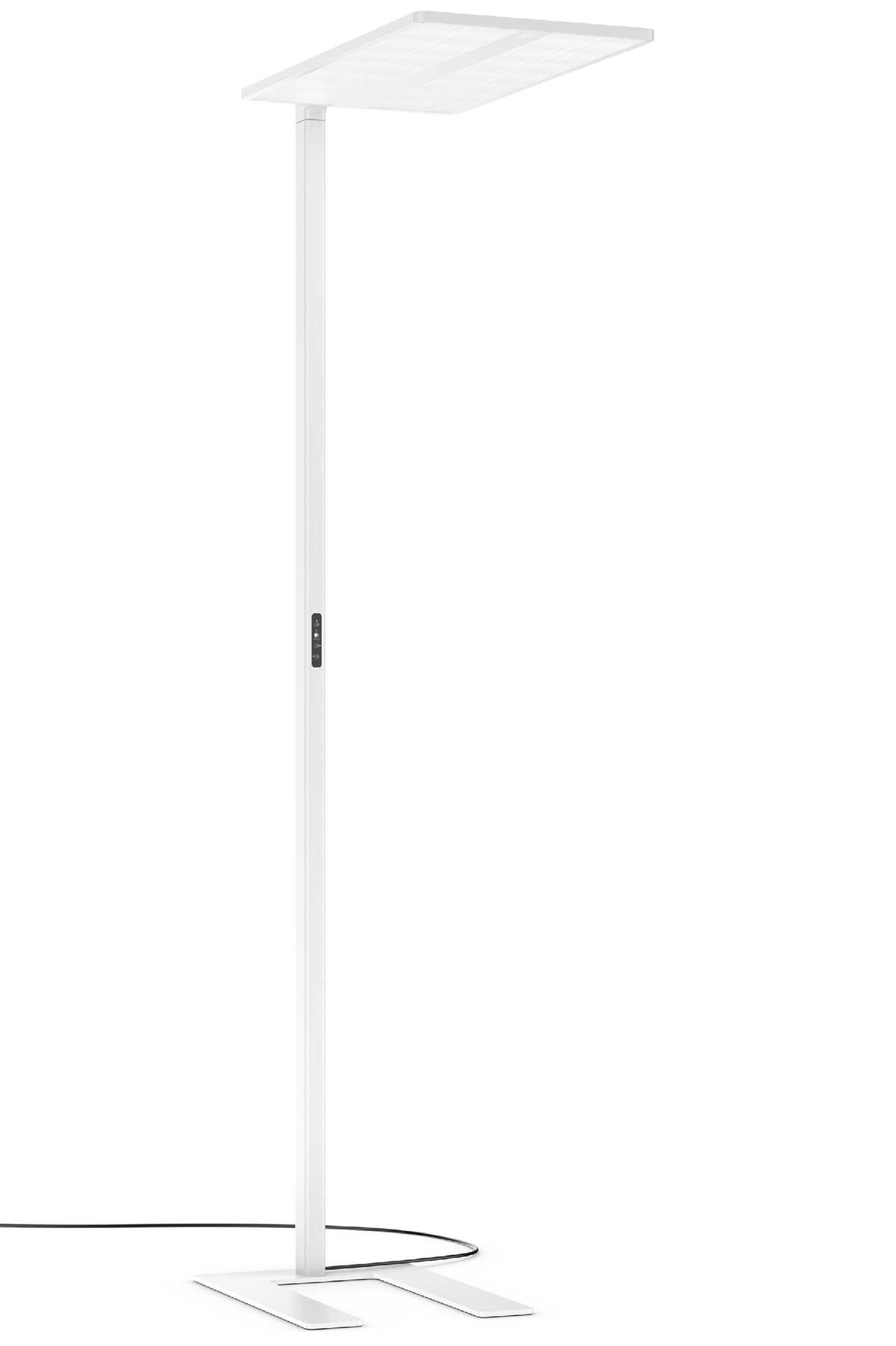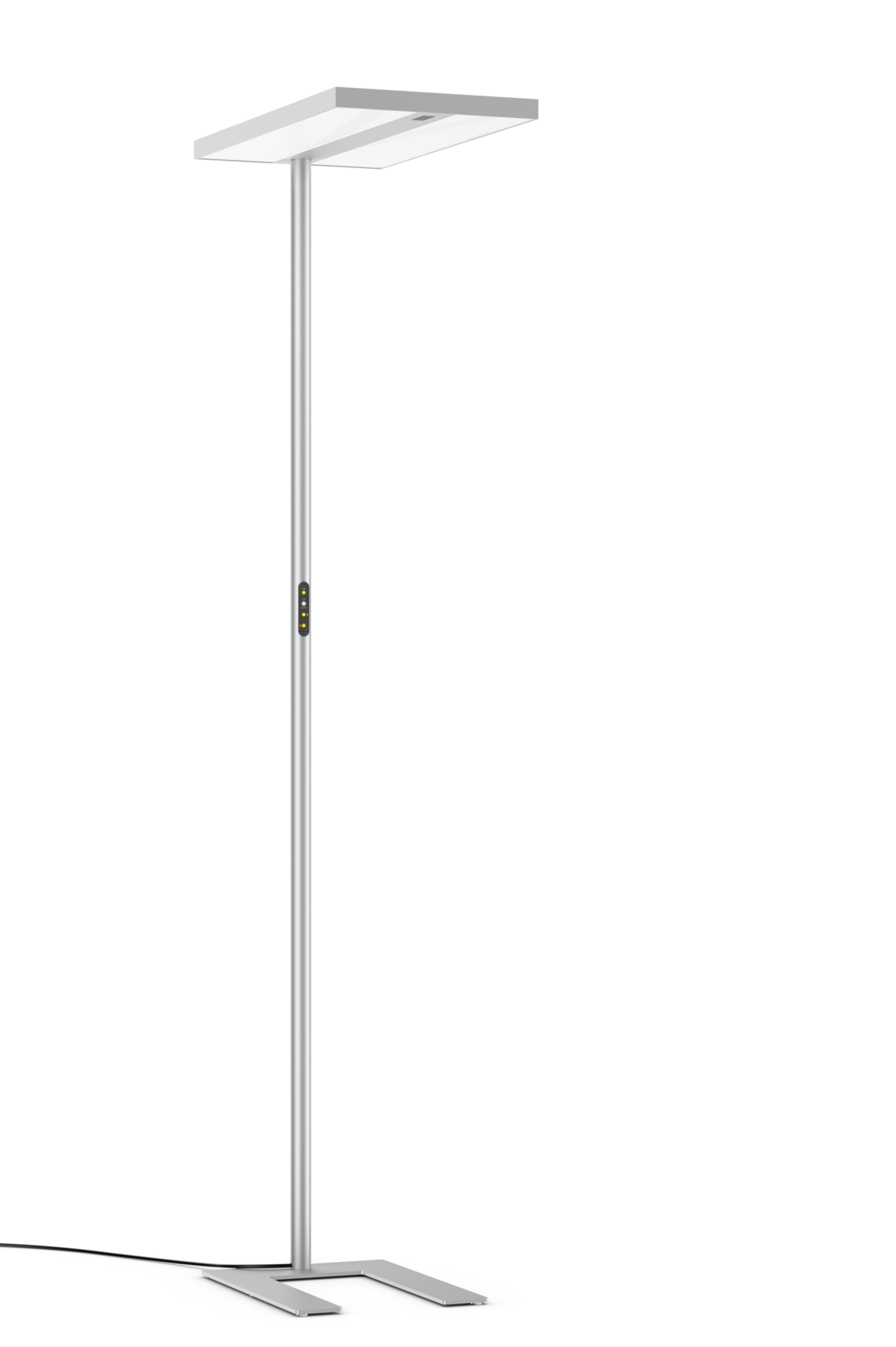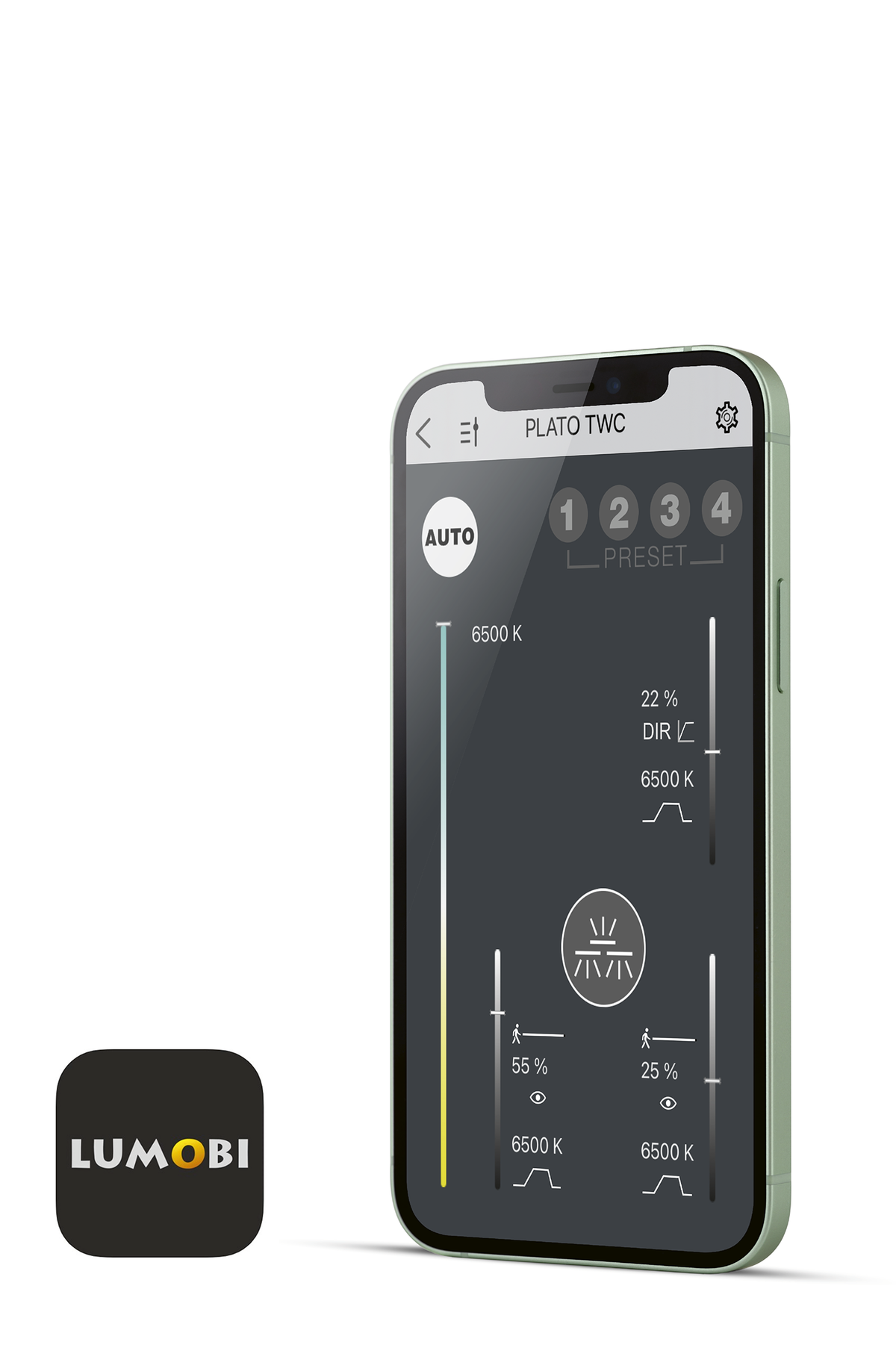How does the direct/indirect light distribution work (EDR function)? ▼
-
The EDR function enables a significant improvement in energy efficiency in the application. When the light is dimmed down, this function first dims down the indirect light. Later the direct and indirect lights are dimmed down together until they switch off. Due to the much stronger light of the indirect LEDs and therefore the higher electrical power - but much more inefficient than the direct light due to the reflection via the ceiling and the longer distance to be covered by the light - a lot of energy can be saved in the application.Technical background
The interaction between direct and indirect light is largely responsible for the good illumination of the work surface. First and foremost, the direct light component should provide the best possible glare-free illumination. The indirect light component additionally helps to illuminate the workstation in the extended environment and to brighten up the surrounding room. Since the indirect light component does not glare directly - and only acts indirectly via the ceiling reflection - significantly more light is emitted in the indirect component. Together with the direct component, this enables a high degree of homogeneity of the area to be illuminated. As soon as ambient light, e.g., daylight from windows or ambient light from other luminaires, is added, this light virtually takes over the function of the indirect light component of the floor luminaire. The EDR function precisely takes this aspect into account - at first, only the indirect component is regulated back. If the ambient light continues to increase, the direct light is then also reduced until the point where no more light from the floor luminaire is needed to sufficiently illuminate the workstation.
How should I operate the floor luminaire in daily use? ▼
-
In the normal operating state, the luminaire operates fully automatically when in AUTO mode - no manual intervention is required. That means, the luminaire switches on when the motion detector detects movement, and it switches off again after the detector-switch-off-time has elapsed after the workplace has been left. At the same time, the amount of light is automatically adjusted based on the ambient light (daylight or ambient lighting). If the workplace is bright enough, e.g., due to incident sunlight, the luminaire does not switch on. If there is not enough light, the luminaire contributes enough light to reach the set target value.Temporary manual operation
If the control unit of the luminaire needs to be temporarily deactivated due to a specific activity, individual channels or the entire luminaire can be switched to manual mode.Remark
The programming of the brightness target value, the detector-switch-off-time and the procedure for temporary manual operation can be found in the operating instructions.
How does the floor luminaire know how bright to illuminate? ▼
-
The luminaire continuously measures the incident light via the light sensor in the luminaire head, compares this with the specified target value (defined via target value programming) and reacts accordingly.Technical background
When programming the brightness target value, the existing illuminance is measured at the light sensor in the light head. This value is stored in the control unit. During operation, the continuously measured illuminance is compared with the target value and the luminous flux of the luminaire is regulated so that the value measured at the light sensor corresponds to the target value.
It should be noted that the color and texture of the table surface significantly influences the light regulation. If the target value is for example programmed with a dark table surface, for, the value measured at the sensor is significantly lower than with a white table surface, since a dark surface reflects less light than a bright surface.
Therefore, the luminaire may sometimes react in an unusual way in certain situations - e.g., reduce light if there is a large white sheet of paper on a dark table. The light sensor in the luminaire then measures a higher luminous flux, even if the surrounding light situation has not changed.Remark
Programming the brightness target value is most accurate when there is as little ambient light as possible - e.g., when the blinds are closed or at night without other light sources.
My floor luminaire sometimes just turns off even though I am working. What do I have to do? ▼
-
To ensure the most energy-efficient operation possible, the time during which the luminaire is still on - even though no one is at the workplace - should be kept as short as possible. This would argue in favor of setting the switch-off-time to a few minutes, but in order to determine the correct switch-off-time, the activation of the motion detector must also be taken into account. This requires a certain amount of movement to be able to detect it at all. If you remain more or less motionless, the detector cannot detect this movement and the switch-off-time begins to elapse. For example, if you are reading an article or write a report and the movements in the sensor area are very minimal, it can occur that the luminaire switches off despite your presence. For this reason, the detector-switch-off-time must be selected so that the luminaire does not switch off during daily work if possible.
Recommended motion detector switch-off-times:
- 5 minutes – for high energy efficiency
- 15 minutes (Factory setting) – for most office activities a balanced recommendation
- 30 minutes – if the luminaire switches off too often during work or a longer basic illumination is desiredRemark
Regarding the switch-off-time and basic illumination, further options are available via app settings for the luminaire version with BLE module - these are described in the instructions for app operations.
Why does only the indirect light turn on first on my floor luminaire? ▼
-
A high-frequency sensor is used as a motion detector. Its sensitivity, which can be individually adjusted for the direct and indirect light, switches on the indirect light of the floor luminaire first in the standard setting, when you approach the workstation. The direct light is only switched on when the user sits down at the workstation.
Remark
This setting can be adjusted to personal needs via app settings for the luminaire version with BLE module.
Why do the network functions, e.g. Swarm, no longer work reliably since the last software update? ▼
-
As soon as the software update MAIN 1.72 or higher is downloadable in the app, it is important to perform the update on all luminaires connected to the same network. This firmware version is not downward compatible in the network function and therefore unreliable network operation can be expected if only individual luminaires are updated. The standalone function of the luminaire is not affected.Remark
The currently installed software version can be viewed under Settings - Device Info. The procedure for the simple update of several lights is described in the operating instructions under the topic Update of all systems within range of the mobile device.




